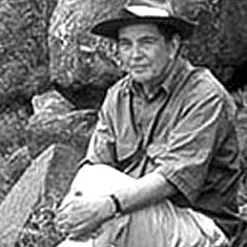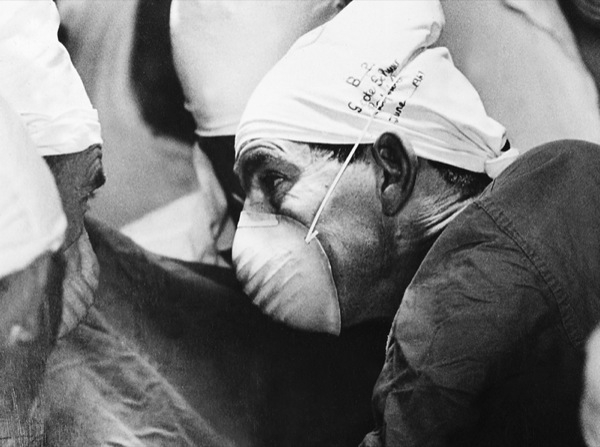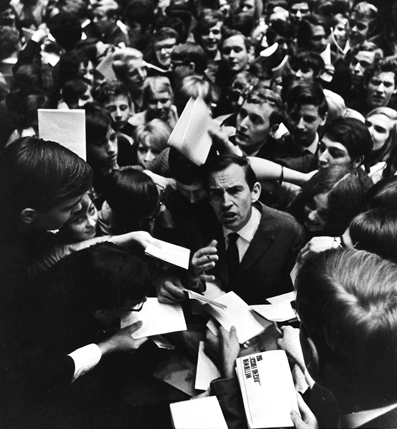Sequence of Events
On a Saturday afternoon early in December 1967 a tragedy occurred which was to set in motion a chain of events that made world history.

A family, having set out to visit friends that afternoon and unwilling to arrive empty-handed, stopped opposite a bakery in the Main Road of Observatory, Cape Town. The man and his son waited in the car while his wife and daughter went into the shop to buy a cake. A few minutes later they emerged, started to cross the road, and were both struck down by a passing car. The mother was killed instantly and the daughter was taken to Groote Schuur Hospital in a critical condition and later declared brain dead. This young lady, aged 25, was Miss Denise Darvall.
Only those who have suffered a similar catastrophe can begin to feel what the father of Denise Darvall must have experienced. Faced with the loss of both his wife and daughter, Mr Edward Darvall had both the courage, and the love of his fellow beings, to agree to the donation of his daughter's heart and kidneys.

A second family in Cape Town was to become inextricably linked with the Darvall's tragedy. Late in 1967, one of the patients seen by the heart specialists of the Cardiology Department of Groote Schuur Hospital was a 53 year old Sea Point businessman. He had suffered a number of heart attacks which had almost totally incapacitated his heart muscle. His body was bloated, he could hardly breathe, and he was near to death. The doctors and his family, however, recognised the fantastic spirit and courage with which he fought to retain his tenuous hold on life. His name was Dr Louis Washkansky.
The Cardiology Department was responsible for most of the patient-referrals to the surgeons of the Cardiothoracic Surgery Department of Groote Schuur Hospital. The late Professor Velva Schrire, who led this group of specialists, had the foresight and courage to recognise that the surgical techniques in use at that time could not help all forms of severe heart failure. The meeting of this indomitable patient and the far-seeing Professor of Cardiology was another link in the chain of events that was to make history. Dr Louis Washkansky was willing and brave enough to take the chance on an untried surgical treatment, a heart transplant.

The Head of the Cardiothoracic Surgery Department at Groote Schuur Hospital at the time was Professor Christiaan Barnard. He rose from a Karoo childhood to become a highly skilled and dedicated surgeon and finally one of the most famous cardiac surgeons of our time. By 1967 he had gathered together a team of gifted surgical colleagues to assist him. However, apart from the remarkable surgical abilities of Professor Barnard and his team, the skills of many other disciplines were needed. These included the cardiologists who had assisted with the diagnostic assessment of the patient and confirmed that a revolutionary surgical procedure was the only possible form of treatment; the radiologists and radiographers who provided the X-rays; the pathologists and their technologists who handled the laboratory tests; the immunologists who determined that the donor heart would not be rejected by the patient; the anaesthetists who provided the safe anaesthetic and monitored all vital functions; the experienced nurses in the theatre, the intensive care unit, and the ward who assisted the doctors and provided skilled nursing at every stage; the technologists who operated the heart-lung machine and other equipment; and the blood transfusion service which ensured that sufficient and safe blood was available. Apart from these people there were still others who supported the project in the background in many different ways. The separate links in the historical chain had all been forged and shortly after midnight on that Saturday surgery began. Just before 6 a.m. on Sunday 3 December 1967 a new heart in the chest of Dr Louis Washkansky was electrically shocked into action.

The first human heart transplant in the world had been performed in Groote Schuur Hospital.
This event focused international attention on Groote Schuur Hospital and created a world-awareness of the expertise and abilities of its staff. Professor Barnard, without doubt, had the appropriate training, the background in research, and the necessary surgical skills to perform this remarkable feat. He also had the farsightedness and courage to take the medical, ethical and legal risk involved in performing a heart transplant. However, it must be remembered that this transplant could never have occurred without the skill and support of the many other disciplines involved.
